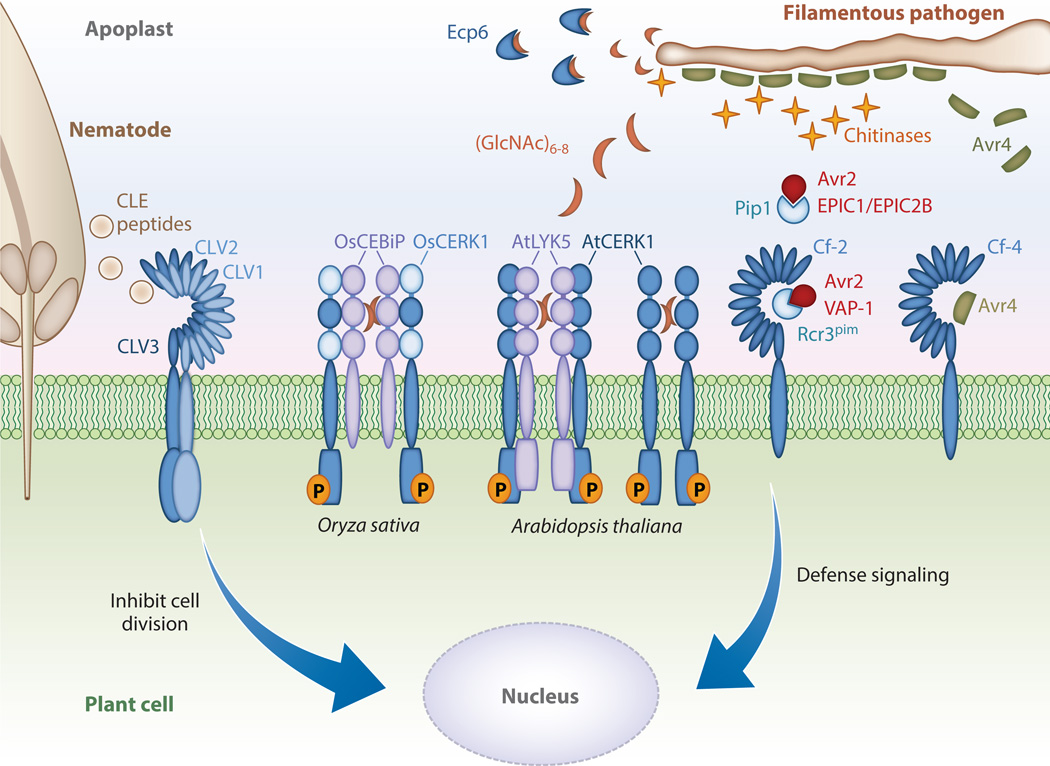Figure 1.
The battle in the apoplast between plants and pathogens. Filamentous pathogens secrete multiple effectors to interfere with host immunity. The Cladosporium fulvum Avr4 effector shields and masks chitin present in the fungal cell walls from tomato chitinases during infection. The Avr2 effector binds to and inhibits tomato apoplastic proteases such as Rcr3 and PiP1. The plant-parasitic nematode Globodera rostochiensis secretes the VAP1 effector that blocks Rcr3’s active site. The Phytophthora infestans EPIC1 and EPIC2B effectors also inhibit apoplastic proteases. Perception of apoplastic effectors can be mediated by receptor-like proteins (RLPs). Avr2 results in a conformational change in Rcr3, which is perceived by the cognate tomato Cf-2 RLP. Perception of Avr4 by the tomato RLP Cf-4 is hypothesized to occur through direct effector binding. The LysM-domain containing effector Ecp6 interferes with host immunity by sequestering short chito-oligosaccharides that could be released by the fungus. Such short chito-oligosaccharides, usually six to eight oligomers in length [(GlcNAc)6–8], act as PAMPs (pathogen-associated molecular patterns) and are perceived by plant LsyM domain–containing immune receptors, including Arabidopsis thaliana CERK1 and LYK5, a receptor-like kinases (RLKs), and the Oryza sativa CEBiP. Cyst nematodes secrete effectors mimicking plant CLE (CLAVATA3/endosperm surrounding region-related) peptide hormones, which are perceived by CLAVATA RLKs. CLAVATA RLKs regulate stem cell maintenance, and it is hypothesized that nematode CLE effectors act to inhibit cell division to promote syncytium development. Not to scale.

